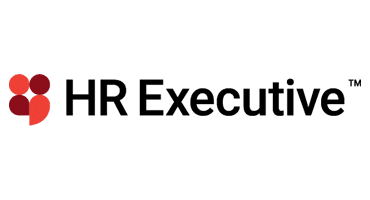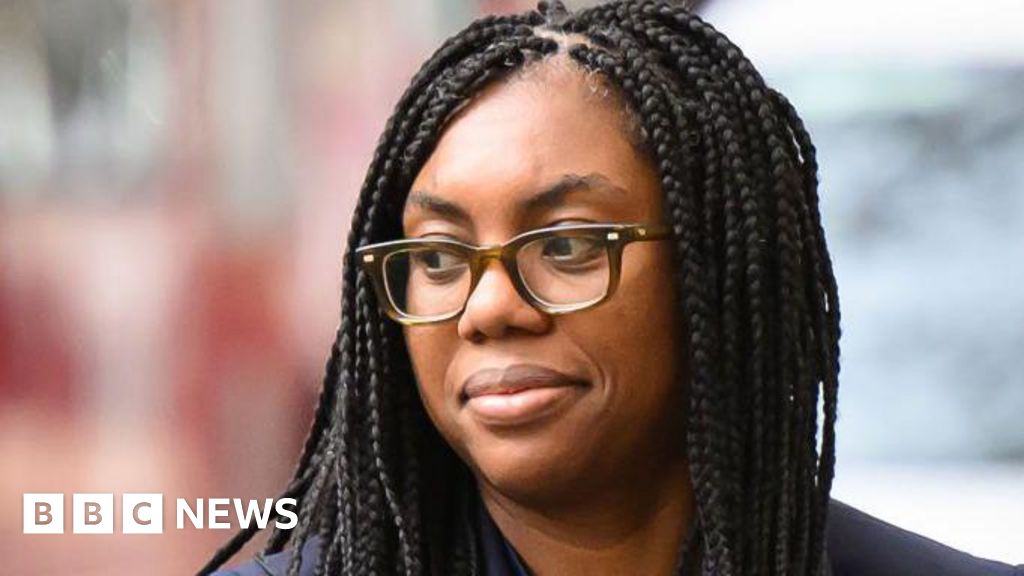This is the published version of Forbes’ Future of Work newsletter, which offers the latest news for chief human resources officers and other talent managers on disruptive technologies, managing the workforce and trends in the remote work debate. Click here to get it delivered to your inbox every Friday!
AI is reshaping industries that range from recruiting and entertainment to voice actors and news.
ILLUSTRATION BY ANGELICA ALZONA FOR FORBES
Another week, another industry being disrupted by AI. My colleague Rashi Shrivastava has a fascinating look at how generative AI tools can make voice actors say things they never said, as well as put their jobs at risk, as employers begin to experiment with text-to-speech tools. Meanwhile, Forbes’ Alex Levine explores how social media users are adopting generative AI tools to produce news segments that look real, featuring top anchors from major news outlets who are reporting fake stories. At the Under 30 Summit in Cleveland this week, Forbes chatted with Genies CEO Akash Nigam about how its avatars, with AI growing, are “going to develop a personality” themselves.
It’s a riveting and at times terrifying time to think about how technology is reshaping and reimagining how work, jobs or even whole industries can operate. But it’s a promising one, too: Forbes spoke with Nancy Xu, founder and CEO of Moonhub, which uses a conversational chatbot to help companies find hundreds of relevant candidates for jobs. AI is remaking cloud computing, reshaping entertainment and launching companies that could help build biotech breakthroughs. For more on what’s new from the world of AI, the future of benefits and the latest return-to-office concerns, read on—this week with the help of Megan Poinski, our new Staff Writer who will be helping to curate this and other Forbes newsletters.
Hope it’s a great weekend.
HUMAN CAPITAL
This week, the earnings gap between women and men was in the spotlight. Harvard professor Claudia Goldin won the Nobel Prize for economics for her research on women in the workplace. Her research focus: why fewer women work, and why they earn less than men.
The gender wage gap is still pervasive, and it is present in jobs at many stages of the career ladder. This week, the trial began for a female Google executive who claims she was hired at a lower “level” than male colleagues with similar backgrounds and experience. She says she was denied promotions because of her complaints, which she claims cost her millions of dollars in “past and future lost wages and benefits.”
The year of labor uprising continues, but there’s been a tentative agreement reached between the union representing Kaiser Permanente healthcare workers and the company. The Service Employees International Union-United Healthcare Workers, which represents more than 75,000 workers in the healthcare system, announced the deal on Friday morning, promising details later. This would end the largest healthcare strike in U.S. history.
Strikes among actors and automobile manufacturers continued this week, with rifts between employees and employers deepening. On Wednesday, 8,700 members of the United Auto Workers walked off the job at a Ford truck plant in Louisville, Kentucky, the automaker’s largest manufacturing facility and one of its most profitable. Also on Wednesday, both representatives from actors’ union SAG-AFTRA and from the Alliance of Motion Picture and Television Producers said talks to end the monthslong actors’ strike had broken down.
ARTIFICIAL INTELLIGENCE
Finding the perfect candidates for job openings can be tedious, but San Francisco-based startup Moonhub has created an AI platform to make it easier. Moonhub’s AI recruiter was trained on a database of more than 1 billion public profiles from several top professional networking sites including LinkedIn, Upwork, GitHub and Google Scholar. It can find and screen potential employees, while human recruiters manage the rest of the process (for now). Moonhub closed a $10 million seed funding round this week, and Forbes’ Rashi Shrivastava writes about how the company is changing recruiting.
POLICY & PRACTICE
September’s employment figures, reported by the Labor Department last week, exceeded expectations, to put it lightly. The U.S. economy added 336,000 jobs last month, nearly double the 170,000 economists had predicted.
The new jobs were spread throughout industries, with the largest gains in leisure and hospitality—which has returned to February 2020 pre-pandemic levels—and government. However, employment and job listings in the tech sector were down, according to CompTIA, the nonprofit association for the IT industry and workforce.
But more jobs do not add up to broader economic improvement. Healthier employment rosters could lead the Federal Reserve to raise interest rates to calm inflation, some fear. The report immediately caused the Dow Jones Industrial Average to drop.
WHAT’S NEXT: EY CHIEF WELLBEING OFFICER FRANK GIAMPIETRO
Rachel Hodgdon, President & CEO of the International WELL Building Institute, and Frank Giampietro, US Chief Well-being Officer – EY speak on stage at an event in New York for the Humanity 2.0 Foundation and International WELL Building Institute on February 28, 2022 in New York City. (Photo by Eugene Gologursky/Getty Images for Humanity 2.0 Foundation )
Getty Images for Humanity 2.0 Foundation
How do you get people back to the office? Is it free snacks? Buzzy concerts in the office parking lot? Threats of getting dinged on your performance review? Professional services giant EY thinks it has a better answer: Reimbursing people for some of the day-to-day costs of going to the office, like child care, commuting costs and doggy day care for that Labradoodle many workers got during lockdown.
Last year, it instituted a “Way of Working” (WOW) Fund that now reimburses employees up to $800 a year for commuting, dependent care and pet care-related costs. It ties a 150% increase in people coming into the office since February 2022, when the WOW Fund was rolled out, in part to the new benefit. Forbes spoke with the firm’s Americas chief wellbeing officer, Frank Giampietro, about how it developed the idea, what it covers, and why too many leaders are focused on the benefits of making an office returnto the company or CEO—rather than to workers. Excerpts from our conversation below have been lightly edited for length and clarity.
Let’s start with what you call the “way of working” fund. What’s new here?
In the first five months, we actually didn’t even set a cap for individuals on it. We really wanted to use it as a way to activate people coming back and really remove [cost] as a barrier. We were pretty clear with folks that we didn’t know if this was going to be an ongoing benefit that we would extend or not.
During the pandemic, we really evaluated how we wanted to work coming out of the pandemic. We launched a design team of 100 folks that represent all the parts of our business at all levels. We got a lot of great feedback from them not just that hybrid feels like it’s going to be the right model on how we deliver our work, but we also got a lot of feedback from them about what kind of new barriers might be coming up that we hadn’t thought about. People are going to give up time that they used to have if they commute. At the time, there were a lot of safety concerns in large cities at the back end of COVID and traveling in public transportation.
We had commuter benefits, but really expanded them out. There were typical flexible spending accounts that people could contribute to on a pretax basis. … It became a reimbursement, whether that was for driving or we even paid for Ubers; we paid for parking. … [For childcare,] in the past, we were giving them access and preferred rates. Now we’re actually doing reimbursement. We included pet care, which we had never had before.
In the beginning, there was no limit. Now the fund reimburses employees to $800 a year total, correct?
We monitored it, at the individual level, just to make sure nobody was, you know, taking a helicopter to work and charging it. There was a reasonability standard that was applied. It’s like many benefits, you worry a lot more than the actual practice of abuse. We started doing some listening towards the end of the [first] year when we knew we were going to wind down the uncapped limit to try to understand: Was it really having the impact that we wanted? Was cost still an issue for people? Not surprisingly, it was very well received. People felt like it was going to be a struggle to not have some of that reimbursed. So we landed in a place we thought we could afford to provide something that was really differentiated [at an $800 cap]. We’ve set the expectation that it could go away at some point, but we have no plans to go in that direction.
What you hear over and over again from CEOs trying to get people back to the office is ‘productivity is down.’ And ‘this is not going to be good for the culture of the organization.’ That’s all about the CEO. And the bottom line. Shouldn’t they be focusing more on the benefits to the employee if they want to sell it?
We were really trying—we truly took that employee experience view. Then it became easy to say, what are we trying to solve for? … When we decided to have this hybrid model and we say about 40 to 60% [of time should be] together and the remainder with flexibility, it actually came out of thinking about what was the best way to do the work we’ve got.
What changes have you made to your physical spaces?
We continue to evolve what our office design looks like to make sure we have enough collaboration rooms. When people are coming together in person, we want them to actually spend time together in person. That includes “just in time rooms”—what we call “jit” rooms, which are private little spaces, but they’re sort of pop up spaces to go in and do a call or get some focused work done. People enjoy the buzz and the natural light and the energy that comes from [the office], but we’re balancing that with collaboration rooms where people can literally work together and these private spaces.
There’s no mandate for specific days a week in office, but a 40 to 60% average time together guideline. How does that work?
We just looked at all of our data to say, hey listen, we want to have this kind of 40 to 60% of time together on average over the course of a year in person. But it was a hypothesis driven model. We didn’t actually have any data to see if that was creating the experience we wanted it to create. So we do an employee survey three times a year, and one of the questions we ask people is, how much time are you spending together in person? And so we’re then looking at that data against what their employee experience looks like.
The hypothesis turned out to be correct. Forty to 60 [percent] was the optimal experience for people. People who were working in that balanced model were ultimately having the best experience at the firm. And so we’re continuing to educate and communicate to people that we think this is the right approach.
FACTS AND COMMENT
As interest increases in weight loss and diabetes drugs, like Ozempic and Wegovy, more employers have said they may be interested in covering them as part of employee health plans in 2024. On one hand, this could be good for employees. After all, Morgan Stanley estimates that 7% of the U.S. population—or 24 million people—could be taking these drugs by 2035. Considering the high cost of these drugs, however, there are some potential pitfalls:
43%: The percentage of employers who said they plan to cover these prescriptions in 2024, according to a survey by Accolade and Savanta, up from 25% this year
$5 million: The monthly cost to the University of Texas system for weight loss drugs, before they were dropped from the coverage plan last month
‘We recommend a physician-led approach’: James Wantuck, Accolade’s associate chief medical officer, said a physician should “guide who should be prescribed medications and how to make them part of a holistic health management plan.”
VIDEO
World Mental Health Day was October 10. My colleague Maria Gracia Santillana interviewed Jaime Castro, co-founder and chief product officer of mental health app Selia, at the Forbes Under 30 Summit after he won the Latinx pitch competition.
Watch
STRATEGIES + ADVICE
Virtual meetings are part of the new normal, but it can be hard to know when to speak. How to politely interrupt during a video meeting.
Employees are looking for meaningful work. Here’s how to ensure management doesn’t get in the way.
LGBTQ+ employees do better when their workplace is supportive all year long.
The majority of managers report feeling burnout and are in need of an emotional recharge.
QUIZ
A federal judge formally voided all non-disclosure agreements for staffers from Donald Trump’s 2016 presidential campaign this week. The agreements, which prohibited employees from taking legal action or publicly disparaging Trump during the campaign or “at all times thereafter” were deemed overbroad. At least how many people are impacted by this settlement?
- 59
- 105
- 422
- 513
See the right answer here.
ACROSS THE NEWSROOM
- Get our weekly rundown on the future of climate tech with our Current Climate newsletter. Sign-up here to get tomorrow’s edition.
Thanks for reading! Follow us on Twitter for by-the-minute updates on the latest business and financial news throughout the day.
Credit: Source link











